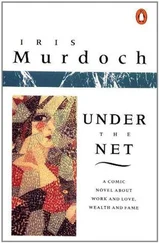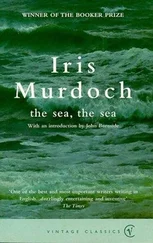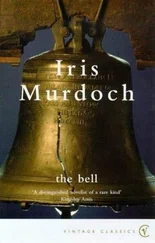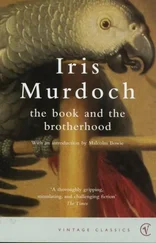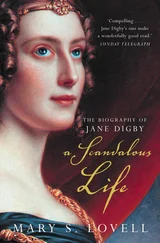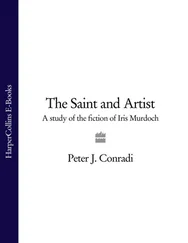French was taught by Mme Barbier, a mild little elderly Frenchwoman with her hair in a ‘bird’s nest’ bun on top of her head, wearing the purple ribbon of the Légion d’Honneur. History began as stories, starting with Blakie’s Britain and her Neigbours, and moving on to Marten and Carter’s (1930). 23Greek and Roman history were taught with a merging of history and literature. There were also lessons on the Greek myths and Nordic folklore. Grammar lessons were formal, so was spelling. Miss Burdett would read poetry soulfully –? filigree petal!’ 24Miss Bain’s lessons to older pupils, known as ‘Affairs’, brought them into contact with the League of Nations Union, with at least one (boring) lecture by a founder, Dr Gooch. Iris’s next school, Badminton, was to deepen this connexion, and her first trip abroad, in 1935, would be to the League’s Summer School in Geneva. Economics involved making ‘cheque-books’, running a ‘bank’, buying and selling ‘shares’. In September 1931 there was a talk about going off the Gold Standard. The pupils also joined ‘The Men of the Trees’, founded by Richard St Barbe Baker, the earliest ‘green movement’.
There were imaginative visits. The children were taken to the Surrey Docks to visit the SS Alaunia, a P & O ship on the Australia line. When it sailed they followed its progress through the ‘Shipping News’ which then appeared daily in the newspapers, receiving a lesson on each port of call, then inventing a letter home as if they had been passengers calling at Gibraltar, Port Said, Colombo. They visited the Bryant & May match factory at Silvertown in the East End, saw fir trees reduced to matchwood by huge screaming saws, were awed by the vats of bubbling chemicals. They visited Walter de la Mare, in Bayswater, and met the tiny poet, who told them a story about a fly. 25
A girl who did well amassed a cluster of red stars, each denoting an ‘excellent’ mark. Some stuck these on the timetable pinned to the inside lid of their desk. 26By 1931–32 Iris was doing so well as to be head girl – ‘a Botticelli angel’ with straight bobbed blonde hair. 27Barbara Denny was in awe of Iris: she was ‘so good, so beautiful, and so intelligent and so nice’ that Barbara, who was to succeed her as head girl, did not dare speak to her. Iris had the job of ringing the bell in the corridor for everyone to calm down and progress into the Main Hall for prayers. 28
‘Prayers’ were idiosyncratic. ‘Jesus: my first (and last?) Jewish boy,’ Iris was to note later, 29but it is not clear how much Froebel was responsible for introducing her to that first Jewish boy. The children took their places not in conventional class rows but in concentric circles, referred to by Miss Bain as ‘a symbol of our one-ness’, 30the oldest against the walls on fixed benches, the others sitting cross-legged in diminishing circles to the babies in the centre who were supposed to be holding hands, though some waved to watching Mamas in the gallery above. There was a hymn, perhaps a psalm, finally a doxology such as ‘God be in my Head’, ‘Glad that I live am I’, ‘Lord God in Paradise look upon our Sowing’, ‘Lead me’ and ‘The Year’s at the Spring’. Entering and leaving the hall was accompanied by the music mistress Miss Catherine Tosh to tunes such as Grieg’s Homage March. The choice of hymns, probably from a hymnal called Laudate, may have reflected Miss Bain’s Unitarianism, with hymns orientated towards God the Father rather than the Son.
The English teacher Miss Burdett – rather formal: tailored silk blouses, hair drawn back, careful manner – enjoined pupils to become members of the Bible Club and to read a portion of the Holy Book, printed off onto cards, each day. But the religious mood was non-doctrinal and non-dogmatic, uncontroversial if not indeed ‘virtually secular’. Iris recalled, ‘When I was 5 or 6 years old I remember a girl at school saying: “God can do that. He can do anything because he’s magic.” A teacher said “No, he is not magic. He is wonderful.” The odd thing is that, I think, I understood the point at once!’ 31
The school library saw much quiet work and study. Projects began early, and research involved cutting up old copies – unsupervised – of the Illustrated London News to make ‘books’ on ancient Greece, medieval England or Egypt. Punishment was almost non-existent, 32and so were serious misdemeanours.
There were theatricals. Among Iris’s first writings was a fairy play with a chorus for rabbits, probably put on during a school concert. Barbara Denny remembered her mother around 1926 making her a rabbit’s bonnet from white velvet, with ears with pale pink lining, which stayed in her dressing-up box for many years. In 1930, inspired by Miss Tosh who, clad in a green Grecian tunic, taught the newly fashionable Dalcroze eurhythmics on the lawn, the pupils mimed a version of Eros and Psyche which Iris, later to explore Plato’s Eros in her own philosophy, recalled in 1982. 33When Psyche said goodbye to her parents, the children had to look very sad. Photographs survive, and include a sweet-faced June Duprez, who in 1942 would impress Iris’s future husband John Bayley when she starred in the early Technicolor Thief of Baghdad. They also dressed up in black sack-like garments, learning dull blank verse to impersonate the chorus of mourning women for a well-received production of Euripedes’ Alcestis at Grove House.
After her arrival at Froebel in 1927, Miriam Allott (née Farris), sat next to Iris.
The prime image: Iris in profile on my right – sitting together on the same bench? Or two desks close together? This strong image is a kind of close-up: head bent forward but not far enough to hide outline of the features – slightly snub nose, slightly retroussé, high cheek bones, high colour there … I can hear the strong Irish brogue, firm clear voice, forceful, authoritative enunciation (possibly countering shyness) … Round her neck a thin cord suspending a money purse which disappeared under the protective tunic – I didn’t wear such a purse but many did.
It was this image which darted into Allott’s head when, thirty years later and a literary critic, she saw an Observer profile on Iris and realised for the first time that the novelist whose works she had begun to teach at university, and to publish on, was her fellow Old Froebelian. 34Miriam’s mother may have been uneasy about Iris, possibly in case she were a bit of a tomboy, possibly because she was Irish. Miriam had two imaginary and genderless friends, known as Chelsea and Battersea, while Iris for her part invented a brother, her references to whom always ‘express[ed] some special feeling for him’. He was a rounded character who developed over time. Miriam Allott wrote to Iris in the 1960s that she wondered ‘whether the character of Toby in The Bell had been inspired by Iris’s brother’. 35Iris’s reply could not have touched on this subject, since Allott was stunned to learn only in 1998 that he never existed. *It is hard to know how much to make of this. The invention of an imaginary or magical friend or sibling is not uncommon among children. It can assuage loneliness by providing fantasy company, but in another sense increase it because of the complications involved in inviting friends home, leading to possible discovery. Living within a fictional world can replace the satisfactions of real friendship. It can also augment the intimacy of the family unit.
Iris herself said that she began writing stories at nine in order to provide herself with imaginary siblings. So writing was an extension of inventing companions. She ‘loved words, sentences, paragraphs'; learning Latin at Froebel made a deep impression also. 36All this suggests some qualification of the purely ‘idyllic’ picture of her childhood, and a compensatory process that started early. There are few clues. One comes in a 1945 letter in which Iris described her childhood as a time when she sometimes felt ‘weak at the knees’, and, presumably remembering her anxieties as a child, goes on, ‘What a fantastic frightening irrational world one lives in.’ 37Writing as a strategy for assuaging anxiety or loneliness is certainly common: witness, for example, Beatrix Potter or Elizabeth Bowen.
Читать дальше

